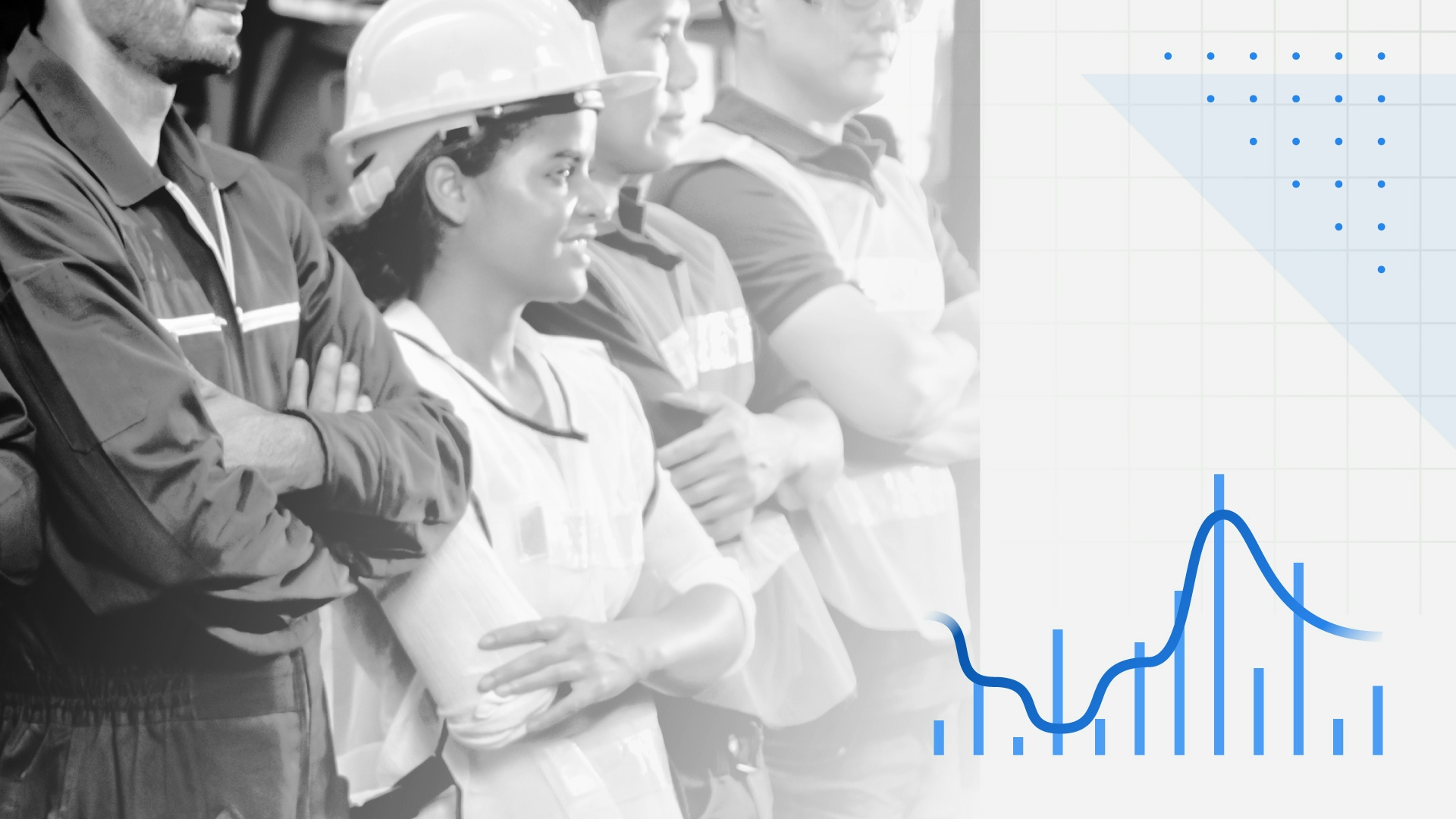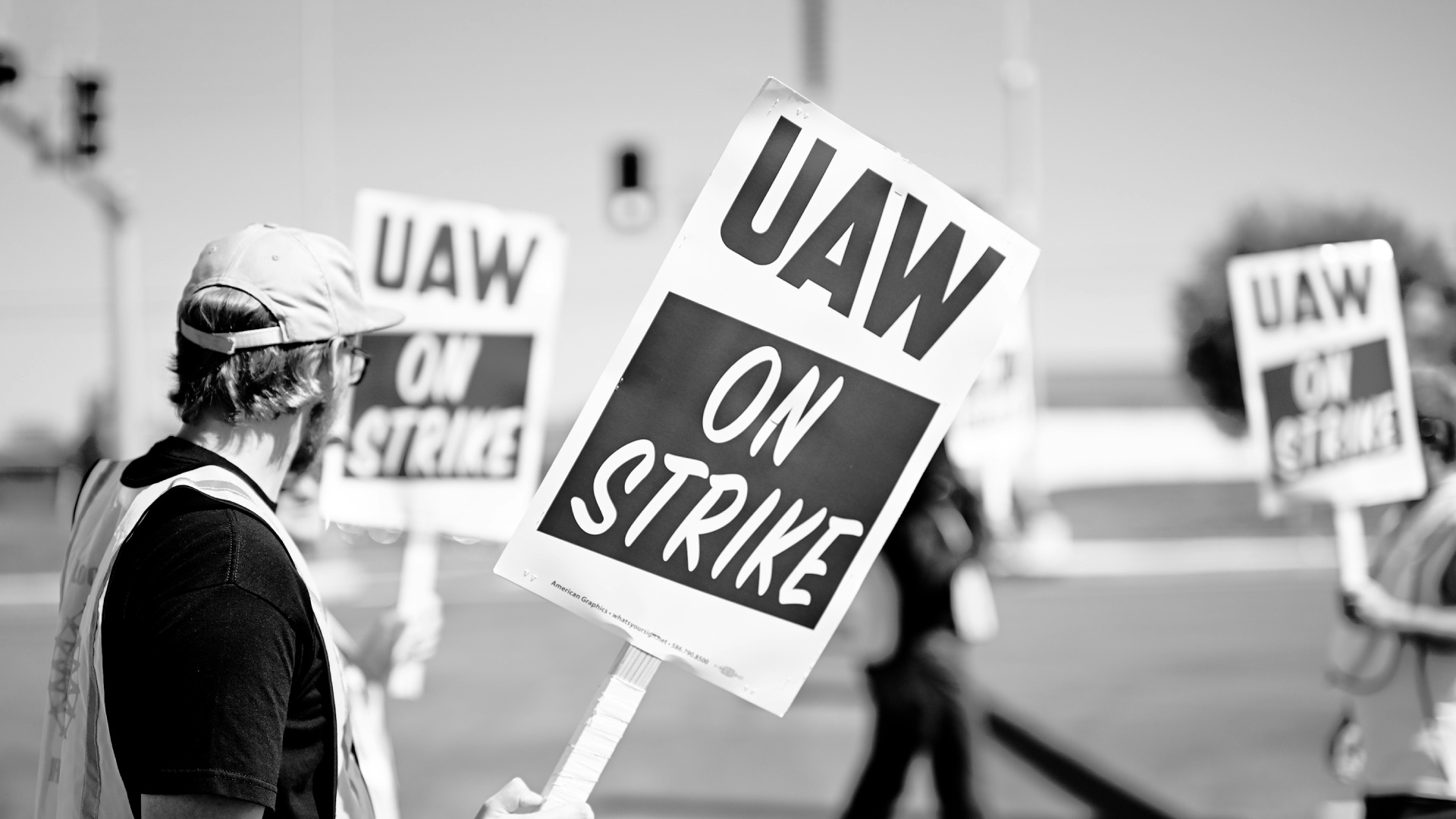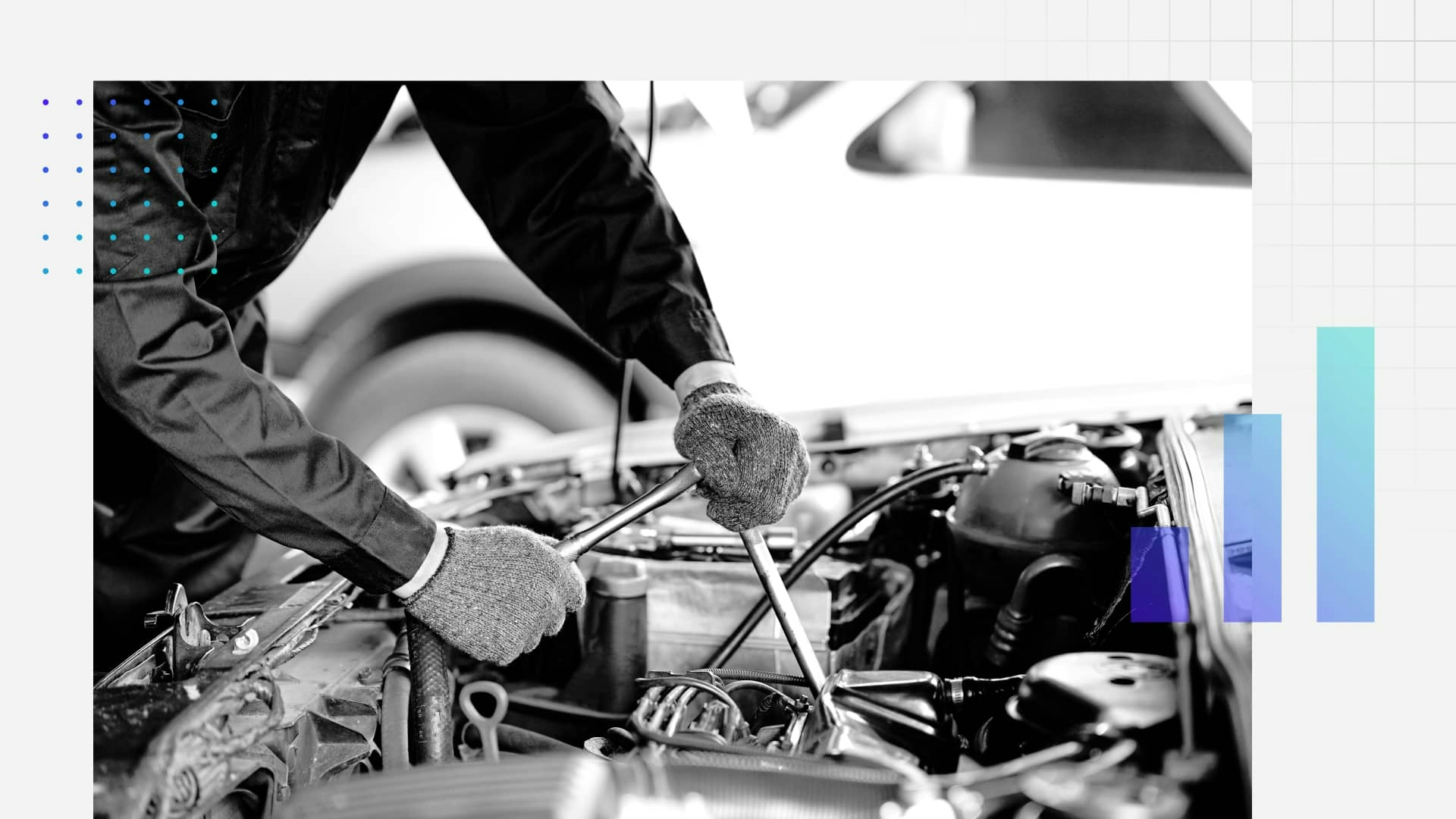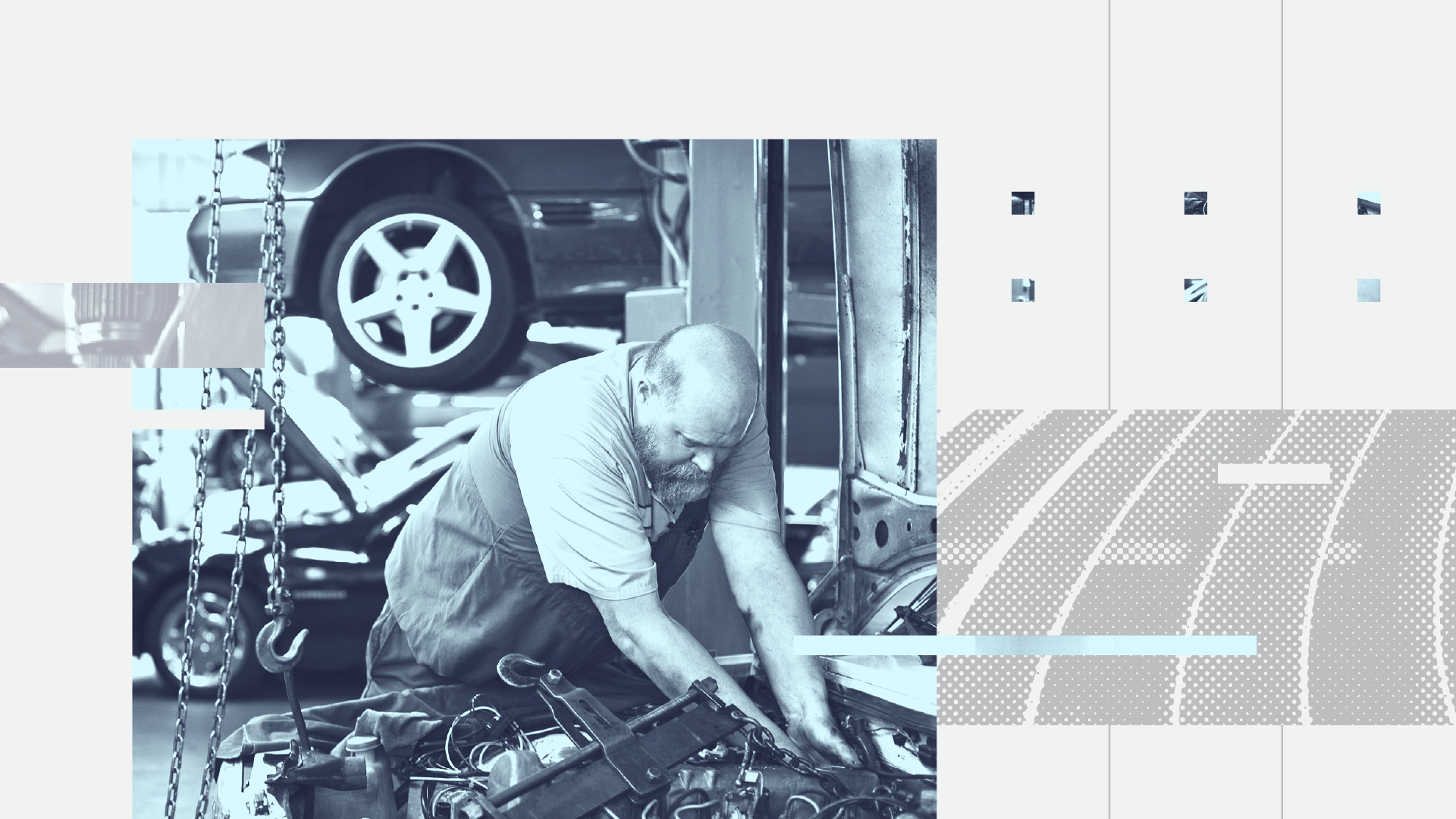Labor Union Members Have Become More Democratic — and Less Liberal — in Recent Years

Key Takeaways
Since 2017, the share of U.S. adults who said they are both a labor union member and a Democrat has increased from 40% to 51%, while alignment with the Republican Party has fallen from 30% to 23%.
However, the share of U.S. union members who identify as liberal has fallen from a 43% high in 2017 to 36% in 2023, while the largest growth on the ideological spectrum has gone to the center, which makes up 28% of the labor coalition compared with 21% six years ago.
The latest data reveals opportunities for political actors on both sides of the aisle to curry favor with an empowered labor movement, to the chagrin of businesses hoping to dampen it.
Democrats would likely see results from touting domestic policy achievements that pay for union jobs and working to solidify their now-modest advantage over the GOP on empathy for the working class. Republicans, meanwhile, could make up ground by highlighting their rejection of what voters perceive as the other party’s ideological and cultural extremes.
Sign up to get the latest data and analysis on how business, politics and economics intersect around the world.
The working class has become less liberal in recent years, a trend that has contributed to ideological moderation among the larger electorate. This movement away from the left is also true for Americans who are in labor unions, but it doesn’t mean they have shirked the Democratic Party.
In fact, labor union members have become more likely to align themselves with the country’s leading progressive brand.
How labor union members’ partisanship and ideology have changed
According to nearly 820,000 total responses Morning Consult has collected since 2017, 51% of U.S. adults who said this year that they are a member of a labor union also said they’re a Democrat. That figure is up from 40% in 2017, the first year we began tracking such data.
Specific demographics at scale: Surveying thousands of consumers around the world every day powers our ability to examine and analyze perceptions and habits of more specific demographics at scale, like those featured here.
Why it matters: Leaders need a better understanding of their audiences when making key decisions. Our comprehensive approach to understanding audience profiles complements the “who” of demographics and the “what” of behavioral data with critical insights and analysis on the “why.”
Democrats Make Up a Growing Share of Organized Labor’s Ranks
On the other end of the spectrum, members of organized labor’s ranks have become 7 percentage points less likely to say they are aligned with the Republican Party (30% to 23%) and 4 points less likely not to affiliate with either major political party (30% to 26%).
Since we began tracking this data, the overall share of the population identifying as part of a labor union has dropped to a historical low, from 10.7% of wage and salary workers in 2017 to 10.1% in 2022, according to Bureau of Labor Statistics data. Some labor activists believe this is due to state-level union-busting efforts, while others point to general disinterest in joining a collective bargaining organization.
Beyond union members’ party affiliation, our data also probed their ideological alignment to find that the Democratic Party’s growth within the labor coalition has not coincided with an increase in the share of these Americans who identify as ideologically liberal.
Labor Union Members Have Become Less Liberal in Recent Years
The share of U.S. union members who identify as liberal has fallen from a 43% high in 2017 to 36% in the 2023 data. Roughly a third of labor union members (32%) say they are conservative, up from 28% in 2017, while the largest growth on the ideological spectrum has gone to the center, which makes up 28% of the labor coalition compared with 21% six years ago.
The clash between more union members aligning with the Democratic Party while labor’s ranks have strayed from the ideological left generally tracks with our understanding of the broader electorate. Last July, we found that while America has become less liberal since 2017, it has not necessarily become more conservative — a finding that has even persisted among Democrats, albeit to a lesser extent.
What it means
Currently backed by the most voter support they’ve had in years, labor unions from Detroit to Hollywood feel empowered to flex their muscles. Amid this climate, our latest data reveals opportunities for political actors on both sides of the aisle to capitalize, to the potential detriment of big businesses.
On the Democratic side, President Joe Biden’s party still has a built-in advantage when voters are asked which party cares about poor and middle-class Americans, while voters are far more likely to say the Republican Party supports big businesses and the elites. Biden’s high-profile embrace of the union movement — marked by his visit to the United Auto Workers strike, along with a louder touting of his and congressional Democrats’ advancement of domestic policy measures that will fund public-works jobs — could help strengthen his party’s standing with organized labor and improve perceptions of its empathy for working-class Americans.
On the Republican side of the aisle, the issue is trickier.
While former President Donald Trump’s populist rebrand of the Republican Party has undoubtedly improved its standing on those same questions of empathy, his party is still well known for policies meant to cripple organized labor, such as the state-level push for “right-to-work” laws. Voices such as Sen. Tim Scott (R-S.C.), a fellow 2024 presidential candidate, have called for the striking auto workers to be fired. And even Sen. Josh Hawley (R-Mo.), who recently visited picketers at a car plant in Missouri in a show of solidarity, was chastised for his past support for right to work and his opposition to a minimum wage increase.
However, the fact that union ranks have distanced themselves from the ideological left in recent years should give Democrats pause, especially given that voters are notably more likely to see that party as ideologically extreme — not to mention cultural tensions with the working class, and especially the white people among it. These structural advantages may continue to play in the GOP’s favor despite a recent history of countervailing action at the policy level.
Eli Yokley is Morning Consult’s U.S. politics analyst. Eli joined Morning Consult in 2016 from Roll Call, where he reported on House and Senate campaigns after five years of covering state-level politics in the Show Me State while studying at the University of Missouri in Columbia, including contributions to The New York Times, Politico and The Daily Beast. Follow him on Twitter @eyokley. Interested in connecting with Eli to discuss his analysis or for a media engagement or speaking opportunity? Email [email protected].


